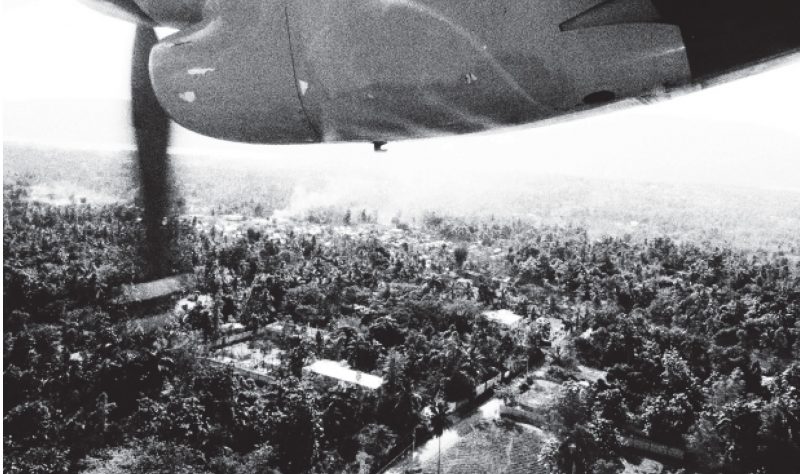I.
Out the dusty window of a little Russian-built prop plane, it looked like Nevada or Iraq. Port-au-Prince—a city of ten thousand cooking fires smoldering on the floor of a broad canyon between the ancient ridges of Haiti’s southern mountains—was all browns and grays. Four years after the 2010 earthquake, our little turquoise Sol Air charter rattled over a city still full of people living in tents, UN trucks rolling through the rubble, and the kinds of corruption that none of the missionaries in shorts could salve. The only sign that we were flying over a once-lush Caribbean nation was the encircling sea. Its own aqua sheen was sullied only by the muddy mouth of the Rivière Momance, which pushed the hazy beige tendrils of Haiti’s topsoil, like floating smoke, out to sea.
From above Haiti looks like the place that has long occupied the world’s mind. Even before the most recent major temblor, this country has served as an icon of our planet’s bleak future and brutal past. As this planeload of right-minded visitors knew, though, the view from the ground suggests a different tale. The poverty can astonish, of course. But so, too, can the riches of a culture born from the country’s proud but awful history as the New World’s only nation founded by its slaves. Those slaves—some two-thirds of whom, in 1791, were African-born—rose up to kill their owners and then founded a sovereign nation where “no whiteman [sic] of whatever nation he may be, shall put his foot on this territory with the title of master…” One aftershock of that event, for a nation long shunned by its neighbors and saddled by unpayable debts, was its legacy of poverty. Another was the ravishing color and depth of its people’s vodou religion, Saint Soleil paintings, and performative arts.

This weekend, the beautiful southern city of Jacmel was hosting its famed yearly carnival. And it was to Jacmel, renowned for the masks its people craft from papier-mâché, that I was flying with a band of friendly Canadians who had cited this event as an inspiration for their latest hugely popular record, whose reception (rapt, mostly), in the early months of 2014, was as big a thing as was happening in world pop.
The band was Arcade Fire. The loose record was their chart-topping Reflektor, an eclectic yet cogent suite of baroquely textured dance-rock whose typically dense array of thematic nods included Kierkegaard’s essays and the myth of Orpheus, that lute-bearing god of song who forayed into the underworld to retrieve...
You have reached your article limit
Sign up for a digital subscription and continue reading all new issues, plus our entire archives, for just $1.50/month.
Already a subscriber? Sign in





